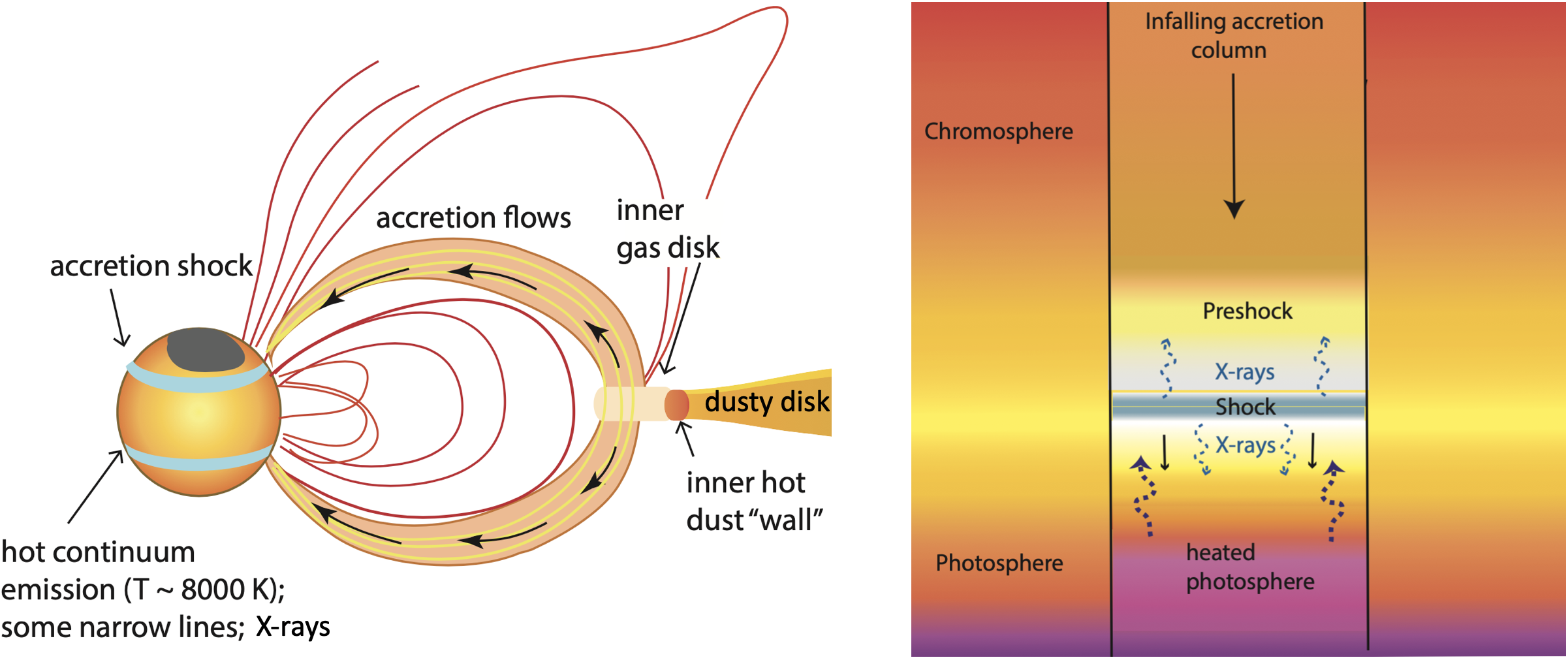The search to understand how planets form is one of the most fundamental in the field of astronomy, and it connects our own history on Earth to the distant planet-forming regions in the Milky Way and beyond. Emission caused by mass accretion onto stars is a key mechanism for heating protoplanetary disks, which determines the chemistry of the protoplanetary material and drives disk evolution. Thus, it is an integral component of the planet formation process and may dictate whether or not planets form around a given star.

As a member of the ODYSSEUS collaboration, I am utilizing Hubble Space Telescope observations from the ULLYSES program to model the rate and structure of mass accretion onto T Tauri stars in nearby star-forming regions. In years to come, I will integrate multiwavelength observations to develop a clearer idea of the physics of these systems as shown through observations from the X-ray to radio regimes.
